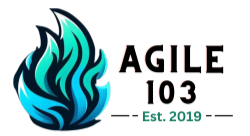Agile organizations often face the challenge of balancing flexibility with predictability. While Agile values responding to change over following a rigid plan, stakeholders still need clarity on timelines, deliverables, and expected outcomes. Release planning and forecasting provide a structured way to deliver transparency while maintaining agility.
This session will explore how to build realistic forecasts, adapt plans as circumstances evolve, and keep teams aligned with business value.
Why Release Planning Matters
Release planning connects strategy to execution. It enables teams to:
-
Align business priorities with delivery schedules.
-
Set stakeholder expectations with transparency.
-
Manage scope and adapt to changes without derailing commitments.
According to Atlassian, effective release planning is one of the best ways to translate a product vision into actionable outcomes.
Forecasting in Agile
Unlike traditional project management where rigid timelines dominate, Agile forecasting relies on empirical data and adaptive models. Useful techniques include:
-
Velocity-Based Forecasting: Using past sprint performance to predict future delivery (Scrum.org Forecasting Guide).
-
Monte Carlo Simulations: A probabilistic method to provide realistic ranges of completion.
-
Capacity Planning: Balancing team availability with business priorities to ensure commitments are achievable.
Key Practices for Successful Release Planning
-
Define Clear Goals: Releases should tie back to strategic objectives rather than just features.
-
Engage Stakeholders Early: Bring business, product, and technical voices into the planning process.
-
Time-Box Planning Sessions: Keep discussions focused and iterative rather than exhaustive.
-
Update Regularly: Treat release planning as a living activity, not a one-time event.
Balancing Flexibility with Predictability
Agile forecasting should not be about promising fixed dates but about providing confidence ranges and communicating risks. By integrating tools such as Jira Advanced Roadmaps or Azure DevOps, teams can visualize dependencies, identify bottlenecks, and create forecasts grounded in reality.
Gartner highlights that successful organizations combine adaptive planning with proactive stakeholder communication to maintain trust.
How This Session Works
In this interactive session, participants will:
-
Explore hands-on exercises with velocity-based and Monte Carlo forecasting.
-
Learn how to run adaptive release planning workshops.
-
Discuss real-world challenges such as shifting priorities and stakeholder pressures.
Join our Release Planning & Forecasting in Agile event to master the balance between flexibility and predictability. Learn to create release strategies that adapt to change while keeping stakeholders confident and engaged.
Register today.
Take control of your Agile forecasting practices.
